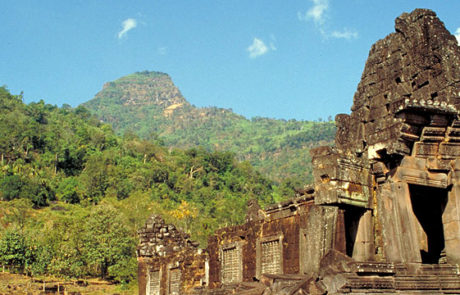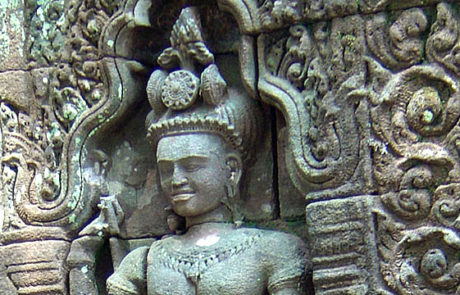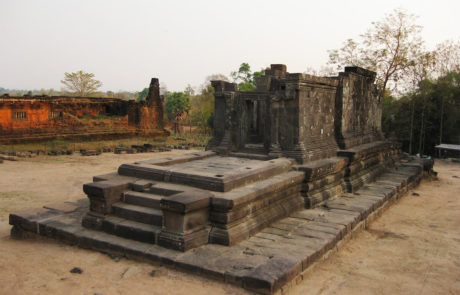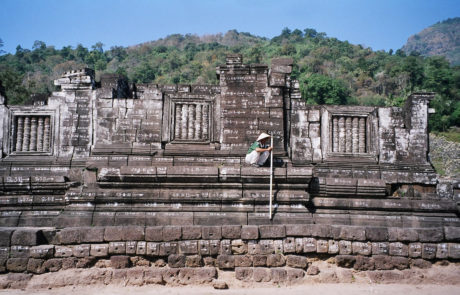Wat Phu, Laos
Emergency stabilization and responsible tourism development to benefit the community around 10th century Khmer imperial ruins
On the banks of the Mekong River in southern Laos stand the Khmer imperial ruins of Wat Phou, or ‘Mountain Temple,’ built during the late 10th to early 11th century on foundations dating back to the 5th century, and inscribed as a UNESCO World Heritage Site in 2001. This shrine dedicated to the god Shiva and the surrounding 400 square kilometer Champasak Archaeological Park represent a well-preserved landscape shaped by man to express the Hindu vision of the earthly relationship between nature and humanity. This spiritually significant layout incorporated a geometric pattern of temples, shrines and waterworks oriented around the Phu Kao Mountain to Mekong River axis. Much like Angkorian temples of the same period, Wat Phou’s walls feature a trove of intricate carvings, including Apsara dancers, Dvarapala guardians and Kalas monsters, as well as scenes from the Ramayana like the abduction of Sita. In the 13th century, Wat Phou was converted into a Buddhist monastery and even today remains a place of worship for Lao Buddhists.
Water erosion and lack of maintenance threatened Wat Phou when Global Heritage Fund joined with Italy’s Lerici Institute, the Lao Ministry of Information and Culture, the Champasak Province Office and the University Polytechnic of Milan to support emergency stabilization and community conservation training. In the process of restoring Nandin Hall, a small sandstone and laterite structure facing collapse, Global Heritage Fund helped to create transformational opportunities in the surrounding community.
One member of our training program started here as field support and rose to head the conservation department in the Historic Monuments section of the Ministry of Information, Culture and Tourism while a Lao project archaeologist went on to receive his PhD from the University of Hanoi and to become the second in command at the Ministry of Culture Archaeology Department.
Within the Champasak community, we supported the restoration of a library as a gather space endowed with contemporary furnishings and hundreds of books and collaborated with local entities to devise culturally sensitive tourism development strategies around the restored Wat Phou where visitor arrivals increased ten-fold between 2005-2010, generating more than US$1 million in annual revenues.






